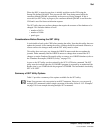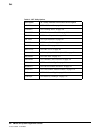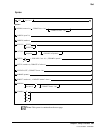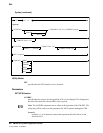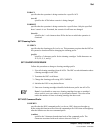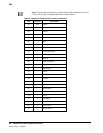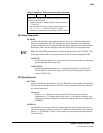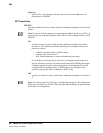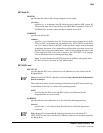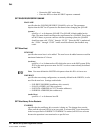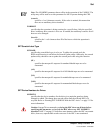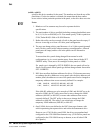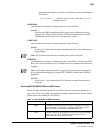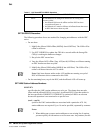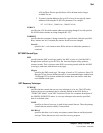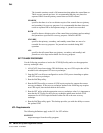
Chapter 4. Utility Functions 309
1st ed., 6/30/04 - 312579601
SET Host ID
HOSTID
specifies that the old host ID is being changed to a new name.
(newhost)
specifies a 1- to 4-character host ID which also serves and the SMF system ID.
This host ID must also be specified by the LIBSUBSYS parameter in the ACS
SYSPROF file. newhost cannot already be defined in the CDS.
FORHOST
specifies the old host ID.
(oldhost)
specifies a 1-to 8-character host ID. This host must not be marked active in the
CDS. An HSC can be down but still marked active. SET HOSTID would fail to
run. To be marked inactive, the HSC, in the host that is down, must be brought
up and then shut down. Also, another host could perform cross-host recovery on
the HSC that is down, but marked active. Either of these change the status in the
CDS of the down HSC from active to inactive. See “SET HSC Level” on page
309 for information about resetting operating flags.
Note: You must delimit the HOSTID (newhost or oldhost) with quotes when
this ID is in lower case (such as Cray station users).
SET HSC Level
HSCLEVEL
specifies that the HSC active and release level indicators are to be cleared for the
designated host.
Notes: If used, HSCLEVEL should be performed only when the host designated in
host-id is inactive.
These indicators remain set after an abrupt termination of the HSC has occurred (e.g.,
a cancellation of the HSC or a crash of the operating system).
(OFF)
specifies that the HSC active and HSC release level indicators for the
designated host are to be cleared.
FORHOST
specifies that the active indicators are to be cleared for the designated host.
(host-id)
specifies the 1- to 8-character host ID of the host to which the operation is
restricted.
Note: StorageTek recommends the following alternatives to executing SET
HSCLEVEL because they reset the HSC indicators and recover resources owned by
the failing host:
Set



